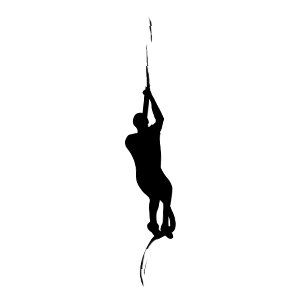 Ever wonder why there are so many running shoes at the store, all of which have different types and amounts of cushion, different technology to minimize pronation, and some have claims that they will reduce injury, and yet we still have 80% of runners injured every year?
Ever wonder why there are so many running shoes at the store, all of which have different types and amounts of cushion, different technology to minimize pronation, and some have claims that they will reduce injury, and yet we still have 80% of runners injured every year?
It is because the shoe you are wearing is not your problem and a new shoe is not your solution. (Ok, so it kind of is, actually. I’ll dive into that a bit later.)
A likely cause to your problem? HOW you run!
Have you ever gone to a park and just sat and watched people run before? Everyone looks a little different. So we have to ask, is there a perfect way to run? Maybe, maybe not. I like to compare it to the golf swing. There are components that are absolutely needed to generate power and hit the ball where you want it to go, but look at professional golfers and they all look slightly different.
With running technique, everyone will be a bit different, but there are key elements that will help to decrease the forces on the body and improve your efficiency, which helps you to run with fewer injuries and allows you to run faster and further without feeling as exhausted. From watching many runners over many years, I can tell you that many of them are missing some key elements.
The big three I want to talk about today are how the foot lands, how the foot comes off the ground, and where the body is positioned.
Heel strike vs midfoot landing
Most people strike on their heel with their foot way out in front of them. Why is heel striking so problematic? Two reasons and they both come down to physics.
When the foot is out in front of you and we hit on the heel, you are landing on a nearly straight leg which places increased forces through the muscles, tendons and bones. Increased forces to make a diamond = good. Increased forces when running = bad.
Heel striking also creates braking forces when you hit. Braking forces not only slow you down, they also require your body to use more energy so you can continue moving forward. Simply put, you run slower and use more energy to do so.
The other problem when the foot is out in front of you is that you have no support there. Do this test for me: Place your right foot out in front of you where you normally hit the ground. Now lift up the left foot and see how well you can balance there. Not possible, right? Or if it is possible, it is very difficult. If you are unable to balance like that, what do you think happens to your body when you do that every single step you take when you run? It requires a lot of increased work by the body to stabilize and overcome the position.
Traditional running shoes do not help this situation any. The drop of the traditional shoes forces you to heel strike. And if you find a way to avoid a heel strike in traditional running shoes, you are then running more on your toes, which causes its own set of issues.
Push off vs pulling
There are two ways to get the foot off the ground when running. We can either use our calf to push off aggressively or we can use our hamstring to bend our knee and lift our foot off the ground. One way uses smaller muscles and more energy, the other way uses bigger muscles and less energy.
Yes, we do need to get onto our toe when the foot is behind our body. But that does not mean you are required to push off when you do that. The more you push off, the more you are using small muscles to move your entire body. Pushing off also requires you to use your hip flexors to bring the leg forward so you can land again.
Many times with a push off, you also get a lot of vertical displacement. The more vertical displacement you have, the more energy you lose upward rather than forward. As mentioned with the braking forces above, vertical displacement is slowing you down and requiring more energy to move you forward.
Instead of pushing off with the foot, you can use the hamstring to pull the foot of the ground. The hamstring is a bigger muscle group compared to your calf and you are also moving a smaller portion of your body that way – lifting the leg off the ground compared to pushing the entire body off the ground. The added bonus with pulling is when you use the hamstring to pull the foot off the ground, the natural forces of the pull bring the leg and foot around to the front of your body so you are no longer using the hip flexors as strongly to bring the leg around. With pulling, you are decreasing the forces and using significantly less energy.
Forward trunk lean vs fall
You need to get your body forward in some way in order to get your momentum forward. How you do that, though, can impact how your body feels when running. With a forward trunk lean, you are straining the muscles a lot more in the back and hips in order to keep your chest and head up. Over time and distance, this can create back and hip pain.
If you fall forward instead, you are letting gravity take you forward and you are no longer straining your back muscles in order to keep your chest and head up, which makes the run much more comfortable.
Running technique is not something that will change overnight by any means. It takes at least 8-12 weeks of consistent work for it to feel natural. I can tell you, though, the benefits of it are huge. Many runners I work with have a quick resolution of pain and also hit new PRs very quickly.
If you are stuck in an injury cycle or have hit a plateau in your training, I highly encourage you to have someone take a look at your running technique to see what is going on. (And no, the analysis in the running store for your shoe fitting doesn’t count.)
Written by Brianne Showman. Brianne is a physical therapist and running coach with Get Your Fix Physical Therapy And Performance. Her focus is on helping athletes resolve injuries in less time by getting to the root of the problem, improving movement patterns, and incorporating proper training to help the body to move more efficiently, more powerfully, and in less injury-prone ways.









